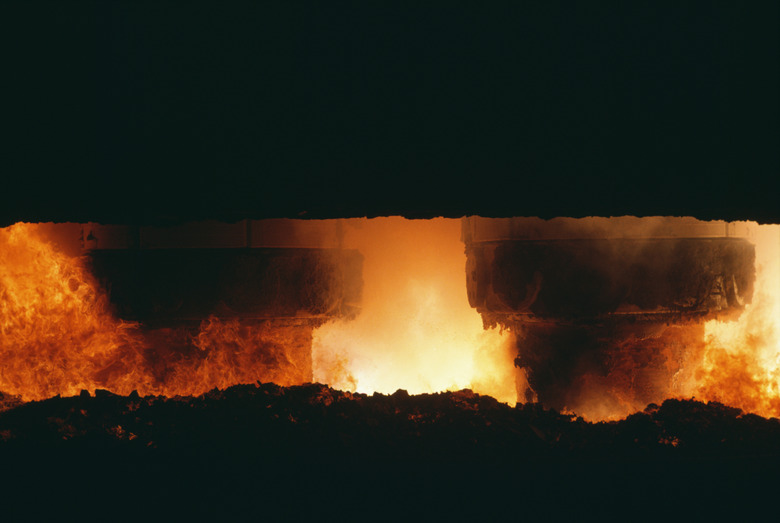The Disadvantages Of Smelter
The process of smelting is when industrial factories extract or smelter purer and more refined metals from ores. Metals like copper or lead are often extracted using this process from earth samples and deposits. Although smelting helps with metal productions, there are many disadvantages to smelting that impact the environment.
Toxic Air Pollutants
Toxic Air Pollutants
The smelting process breaks down the ore that contains not only metals, but other chemicals as well. As a result, many of the chemicals from the ore end up in the atmosphere. Some chemicals include sulfur dioxide and hydrogen fluoride, which are nauseous and pollute the atmosphere.
Water Pollution
Water Pollution
Waste products from smelting include liquid waste into water supplies. Water used to cool remnants of ore are usually disposed of in environmental ways. However; accidental drainage may occur, allowing this toxic water to enter back into the environment. This water contains a number of hazardous chemicals such as lead and chromium, which are extremely hazardous to plant and animal life.
Acid Rain
Acid Rain
As a result of the pollution from a smelting plant, acid rain may be produced. Sulfuric acid mist is emitted from these plants that enter and become trapped in the atmosphere. The acid may travel a few miles before the weight of gravity, and weather activities causes the acid to fall with rain, creating acid rain. Acid rain hastens erosion on land and physically harms plants and animals when touched.
Worker Health
Worker Health
Workers at smelting plants are exposed to toxic chemicals every day. Although the environmental damage done can be costly to the public, workers tend to be exposed to higher levels of toxins from direct exposure in smelting factories. Inhalation is the common way many workers end up exposing themselves to the toxic chemicals of smelting, which can harm worker health and productivity in smelting plants.
Cite This Article
MLA
Fitzpatrick, Mark. "The Disadvantages Of Smelter" sciencing.com, https://www.sciencing.com/disadvantages-smelter-10009006/. 24 April 2017.
APA
Fitzpatrick, Mark. (2017, April 24). The Disadvantages Of Smelter. sciencing.com. Retrieved from https://www.sciencing.com/disadvantages-smelter-10009006/
Chicago
Fitzpatrick, Mark. The Disadvantages Of Smelter last modified March 24, 2022. https://www.sciencing.com/disadvantages-smelter-10009006/
